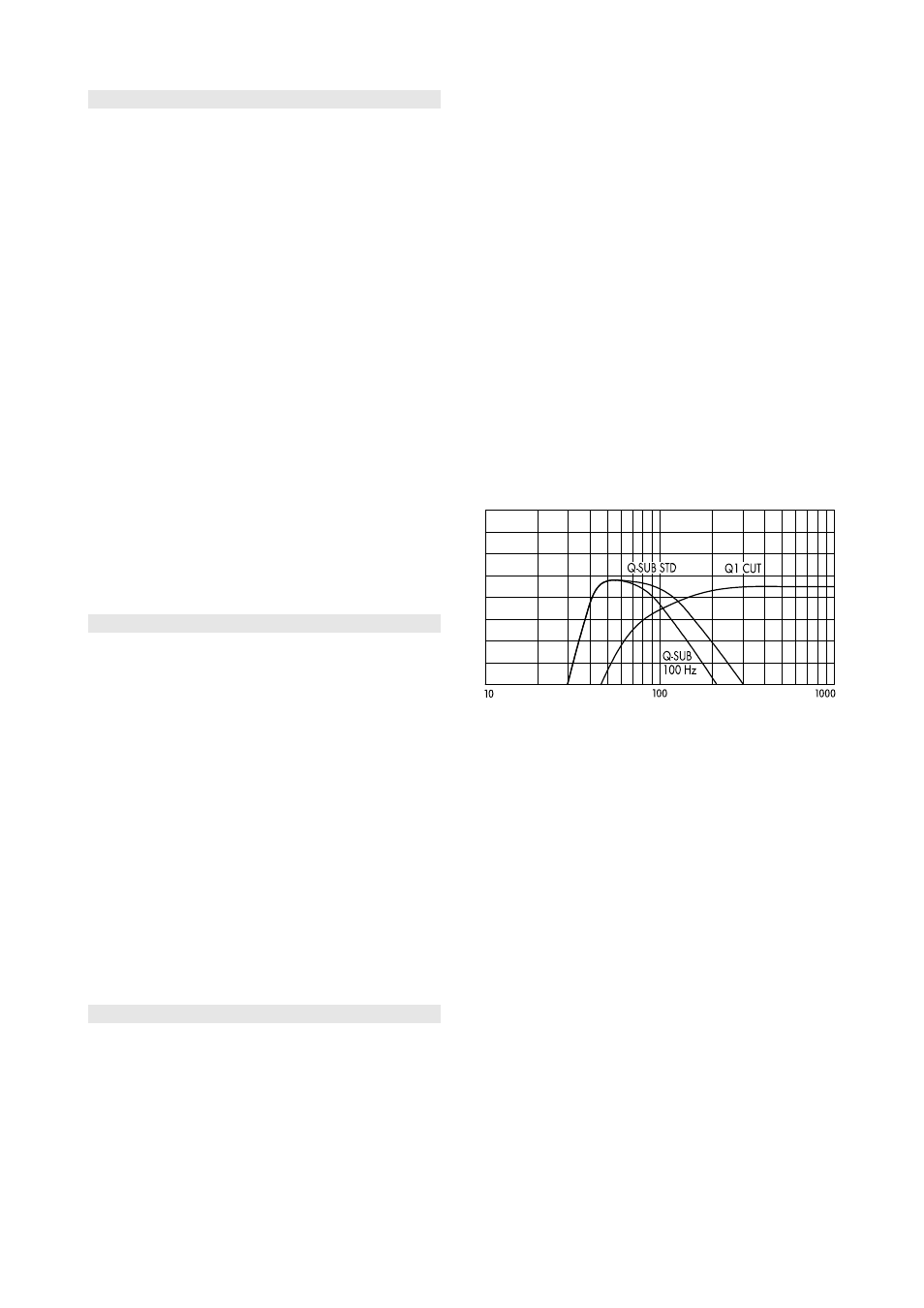The q-series line array, 1 number of cabinets required, 2 subwoofer setup – d&b TI 385 d&b Line array design User Manual
Page 10

5. The Q-Series line array
The Q1 is a compact and lightweight line array cabinet
providing a 75° constant directivity coverage in the
horizontal plane down to 400 Hz. The system can be used
from very small configurations of two cabinets per array up
to a maximum of twenty cabinets per array for larger
venues.
Q1 cabinets have a very low height of only 30 cm (1 ft)
and when combined in arrays its accurate wavefront covers
up to 14° vertically per cabinet, and couples coherently up
to 12 kHz when configured in a straight (0° splay) long
throw section. The Q1 covers the frequency range from
60 Hz to 17 kHz.
The Q7 and Q10 cabinets are mechanically and
acoustically compatible loudspeakers with 75° x 40° and
110° x 40° spherical dispersion patterns which can be
used as a downfill (Q7) or nearfill extension with Q1
arrays.
Smaller configurations of Q1 cabinets can also be used
ground stacked, supported by Q-SUB cabinets. The most
even energy distribution in the audience area will however
be achieved with a flown array.
The TI assumes that all Q-Series cabinets are driven by d&b
D6 or D12 amplifiers. E-PAC amplifiers do not provide HFC
and CSA settings.
5.1 Number of cabinets required
The number of Q1 cabinets to be used in an application
depends on the desired level, the distances and the
directivity requirements in the particular venue. Using the
d&b ArrayCalc calculator will prove whether the system is
able to fulfill the requirements.
Depending on the program material and the desired level
additional Q-SUB subwoofer systems will be necessary to
extend the system bandwidth and headroom. The number
of Q-SUBs needed per Q1 cabinet for serious full-range
program will decrease with the size of the system. For small
setups a 1:1 ratio is recommended, for example four
Q-SUBs to four Q1s, while larger systems will work with a
2:3 ratio, for example eight Q-SUBs to twelve Q1s. Please
note that CSA setups require a multiple of three Q-SUB
cabinets.
As an option Q1 systems can also be used with J-SUB or
J-INFRA subwoofers.
5.2 Subwoofer setup
Subwoofers are operated most efficiently when stacked on
the ground. For cleanest sound and coverage we
recommend arranging subwoofers in a CSA configuration
as described in d&b TI 330 Cardioid SUB array which is
available for download from the d&b audiotechnik website
at www.dbaudio.com.
When used with subwoofers, the Q1 systems should be
operated in CUT mode to gain maximum headroom at low
frequencies.
Q-SUB (40 – 100/130 Hz)
Q-SUB cabinets can be used ground stacked or integrated
into the flown array, either on top of a Q1 array or flown
as a separate column.
Flown Q-SUBs create a different level distribution in the
audience area than ground stacked ones. In particular the
area at the very front below the arrays has much less low
frequency energy when subwoofers are included in the
array. This can be very useful in applications that do not
require high levels of low frequency energy at the front,
however for an event with high stage level additional
ground stacked subwoofers may be necessary.
For Q1 arrays consisting of three or more cabinets we
recommend the use of the 100 Hz setting for the Q-SUB
systems. Smaller Q1 arrays providing less coupling at low
frequencies may benefit from the higher crossover
frequency of the standard mode of the Q-SUBs (130 Hz).
Q1/Q-SUB crossover setup
Compared to a standard Q-SUB configuration a CSA setup
produces slightly less level above 70 Hz, so it may be
advantageous to use the standard (130 Hz) amplifier
setting.
J-SUB (32 – 70/100 Hz)
J-SUB cabinets can be used to supplement a Q1 system in
different ways.
If the system is equipped with a sufficient number of Q-SUB
cabinets, J-SUBs can be used to extend its bandwidth to
below 32 Hz. Driven by D12 amplifiers set to INFRA mode
one J-SUB will supplement up to four Q-SUB cabinets.
This combination will achieve its maximum headroom when
the Q-SUBs are operated in the 130 Hz mode. If for audio
reasons the lower crossover frequency to the Q1s is desired
you may also reduce the gain of the Q-SUB amplifiers.
Decreasing the gain by 2.5 dB will create the same
downward shift to the upper slope as switching to the
100 Hz setting, but with less low frequency boost.
TI 385 (6.0 EN) d&b Line array design, ArrayCalc V8.x
Page 10 of 54
